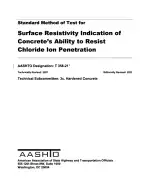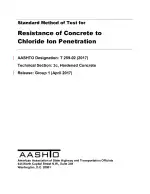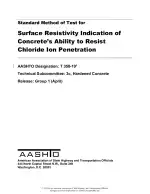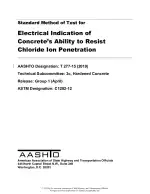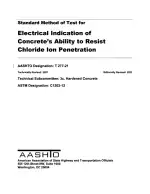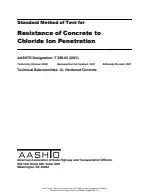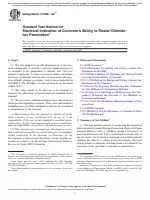AASHTO T 358-21 PDF Download
Standard EN SampleStandard Method of Test for Surface Resistivity Indication of Concrete's Ability to Resist Chloride Ion Penetration
Also Known As:
AASHTO T 358-21 is a standard method of testing the surface resistivity of concrete to assess its ability to resist the penetration of chloride ions. The purpose of this test is to provide a quick indication of the concrete's resistance to chloride ion penetration, which can lead to the corrosion of reinforcing steel and the deterioration of concrete structures.
The test is conducted on water-saturated concrete samples, as the presence of moisture is essential in simulating real-life conditions where chloride ions can be transported through the concrete. The electrical resistivity of the concrete is measured, and this value is correlated with long-term chloride diffusion procedures outlined in ASTM C1556. This correlation allows for the prediction of the concrete's long-term resistance to chloride penetration, which is a critical factor in evaluating the durability and longevity of concrete structures.
By providing a rapid and reliable indication of the concrete's ability to resist chloride ion penetration, AASHTO T 358-21 helps in selecting appropriate concrete mixes and construction techniques to mitigate the risk of corrosion and ensure the long-term durability of concrete infrastructure.
| Language(s) | English |
| File Size | 1.6 MB |

